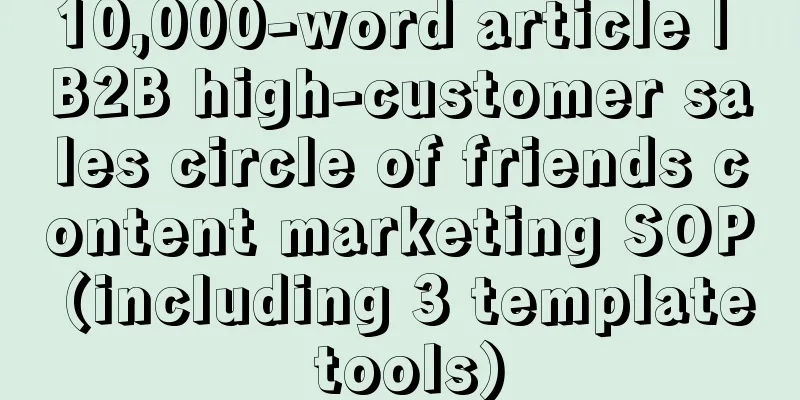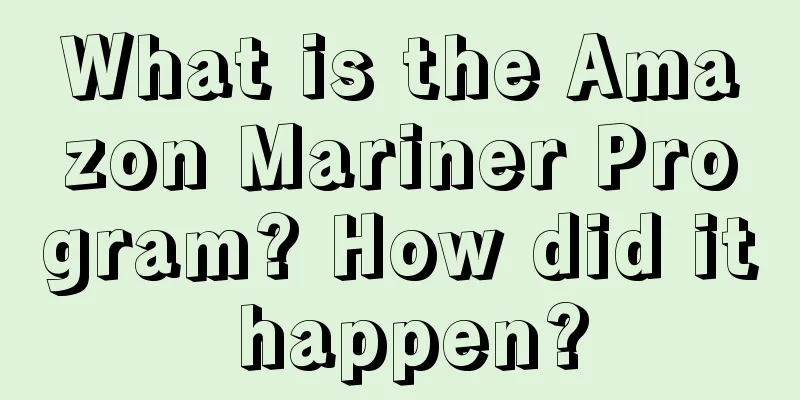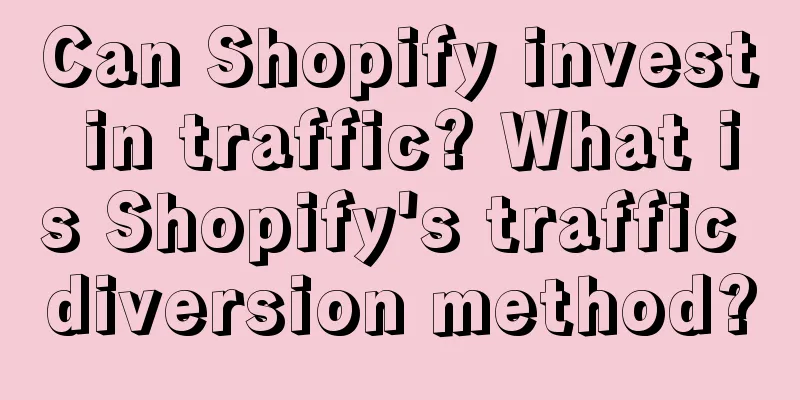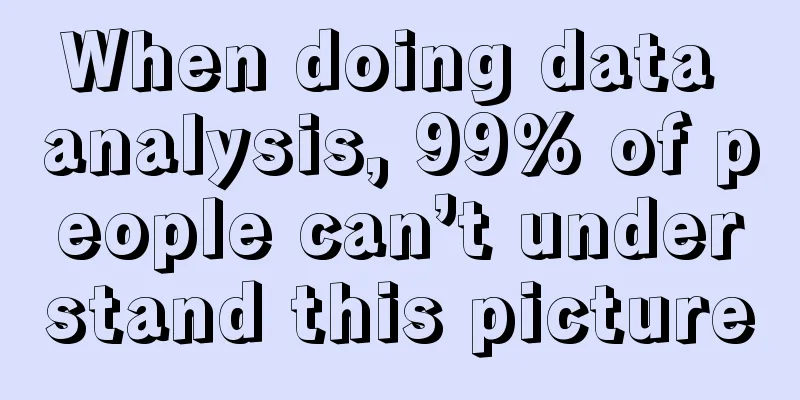10,000-word article | B2B high-customer sales circle of friends content marketing SOP (including 3 template tools)

From face-to-face sales to telephone sales and now online sales, from traditional sales to consultative sales and then to inbound sales, the terms in the sales industry are constantly changing every year, and all the changes point to one key word: sales efficiency. Sales efficiency is specifically a business indicator, which is the average customer transaction cycle. This article wants to talk about how to improve the average customer transaction cycle and transaction conversion rate through the operation of sales circle of friends. The online marketing model that uses WeChat/Enterprise Micro as the contact medium moves the company's marketing into the customer's circle of friends. Marketing to customers is no longer limited to the time frame of 1V1 communication with customers, but 24-hour marketing. But, will your salesperson post on WeChat Moments? This article is relatively long and is mainly divided into two parts. The first part explains why sales people are reluctant to post on WeChat Moments, and the second part explains the specific techniques and program templates for sales people to post on WeChat Moments. If the previous content is too long, I will put the conclusion here first, and you can directly scroll to the back to see the specific techniques. The core points of this article: 1. Why do sales people post on WeChat Moments? All changes in marketing actions are aimed at improving sales efficiency and per capita sales output, so as to obtain higher performance returns with limited manpower input. Sales pay more attention to angel clients. Angel clients can indeed help sales staff achieve quick transactions and increase per capita output, but angel clients cannot rely on the supply of market leads. They need to establish user awareness in the process of educating users on their needs and move the marketing department into the customer's circle of friends. This is the lowest-cost and most comprehensive marketing method. Therefore, sales need to post on WeChat Moments. 2. Why don’t sales people post on WeChat Moments? The sales team management model guided by performance pressure will make sales people invest their energy in things that have more obvious results for closing deals. Instead of cultivating angel customers themselves, it is better to tap into existing angel customers from new traffic. In an established team, sales only solve the last mile of the transaction. Compared with agency owners, micro-businesses, individual IPs, insurance brokers, pre-sales consultants for large customers and other groups, they lack the awareness of independent management, the personal will, goal drive and content materials to build individual IPs. Of course, we cannot ignore the problem that sales people don’t know how to manage their own circle of friends. 3. How to post on WeChat Moments in sales The operation of the circle of friends for B2B sales aims to build a personal image and create a sense of trust. In terms of personal image, it changes from traditional hawking sales to independent individuals with independent business awareness who provide overall value services to customers. The main theme of daily Moments content updates revolves around specific customer service behaviors. Don’t deliberately design the content of Moments, but instead explore the bright spots in the customer service process and present daily behaviors in Moments through reasonable copywriting packaging. In the WeChat Moments marketing SOP section, three template tools are provided, namely character positioning template, character decoration template and content design template. In addition to clarifying the marketing ideas in the circle of friends, the end of the article also talks about a specific team activity method to promote the marketing behavior in the circle of friends within the sales team and truly implement it. Okay, the following is the main text. The full text is 10,000+ words. If you can’t finish reading it, remember to collect it. 1. B2B salespeople, are you really short of sales leads?What B2B sales lack is not sales leads, but customers who have budgets, are key decision makers, need to launch products quickly, trust the brand, and have clear and strong needs that can be met by products/services. We generally call such customers "angel customers". B2B sales are not short of sales leads, but short of "angel customers". 1. What you lack is not sales leads, but angel customersWe recently served a company that runs a hardware procurement platform. For every 1,000 leads obtained through the SEM channel, only 20 met the characteristics of angel customers, about 100 met the four conditions of angel customers, and 40% of the leads had the characteristic of having current needs but other unclear information. 30% of the leads were target customers but had no current needs. From my personal observations, this user distribution ratio is not bad. If the leads come from cold calls, offline marketing, exhibitions or new media channels, the proportion of high-intent customers will be even lower. When it comes to marketing and acquiring customers, B2B businesses often face a dilemma between choosing quantity or quality, and the reason behind this is the energy of sales staff. The marketing department often accuses sales staff of not taking leads seriously and not digging deep into customer needs, while sales staff will say that the assigned leads are not of high quality and are not accurate enough. From the sales perspective, facing performance pressure, of course, they hope that customers will buy as soon as they come, and complete the transaction in the shortest possible time to achieve performance goals. From the perspective of market acquisition, facing limited marketing budgets and marketing channels, it is natural to hope that sales will work hard on every lead to promote transactions, to prove their own customer acquisition capabilities and accuracy, and to obtain more marketing budgets from the company through conversion rates and ROI. Therefore, what B2B sales lack is not sales leads, but “angel customers” who can be converted as soon as they come. 2. Typical characteristics of angel clientsIn past project experiences, we would conduct research on angel clients to understand how angel clients are generated. Although the industries, products and customer groups are different, angel clients have common characteristics. Angel clients are not born but are cultivated step by step through market education. B2B customer transactions need to satisfy the three aspects of demand, trust, and marketing at the same time, while angel customers generally have their own demand and trust, and only need to solve marketing problems. The generation of strong demand and high trust, through research, is found to generally come from these five types, and the proportion increases step by step from top to bottom. 1) Trend recognition Trend-aware customers refer to key decision makers who have the ability to independently recognize development trends, generate demands independently by observing changes in development trends in industries, businesses, and management, and look for suitable products in the market. In marketing, B2B companies usually play the role of trend educators who lead the development of the industry, while trend-aware customers do not need to be educated. They independently generate trend-based demands and find products/services that are in sync with their autonomous consciousness. Trend-aware customers account for the smallest proportion of angel investors, and they place greater emphasis on whether the product/service solution is consistent with their own judgment of the trend. Trend-aware customers are the most ideal seed user type for new to B service brands, and are also the best user type for new to B brands to verify PMF. For example: You are a marketing manager and my product is a CRM customer relationship management system. As AI develops, you realize that there is an opportunity to use AI conversational robots to handle customer acquisition leads and determine the level of intent, that is, to use AI to replace the work of SDRs and shorten the customer journey. This is a self-generated demand, so you start to actively look for solutions for this type of product. You may raise this question in a community, or actively search for the keyword "AI marketing robot", find my official website and articles, and initially judge that my ideas are consistent with yours, so you leave your information and we enter the solution demonstration phase. 2) Problem-driven Problem-driven or pain-point-driven, they are aware of problems in their own business/management and proactively seek solutions. This type of customer has a high demand index but a low trust index in the brand. They pay more attention to the industry ranking of the service brand and the success stories of similar customers, which helps them to gain initial trust and enhance their trust through demonstrations of specific solutions. In the marketing process, the acquisition of problem-driven customers depends more on the company's positioning of demand scenarios, core value propositions and presentation of solutions. For example: You are a marketing manager and my product is a CRM customer relationship management system. The person in charge of market acquisition reported to you that the sales department did not take the assigned leads seriously. The sales manager said that they followed up on the leads, but the intention rate was relatively low and the quality of the leads was not high. The marketing manager said that the sales staff's first follow-up time, follow-up frequency, and communication skills were not implemented in accordance with the standards. The sales manager did not admit it. For the leads that were not followed up in time by phone, the person in charge said that they were followed up through WeChat. Then you realize that you need a product that can monitor sales and customer communication records, and you start actively looking for solutions for this type of product. 3) Demand-based education Demand-based education is when people become aware of problems and passively generate demand under the influence of external forces. For example, in an industry conference, participants hear about a solution that is more effective than the solution they are currently using, thus generating demand. Since the needs of demand-educated customers are generated under passive influence, the two links of demand awakening and product awareness are most likely to be completed together. That is, whoever awakens the customer's needs will have a solution that is more likely to be trusted by the customer, and customers are more inclined to choose brands/products/people that awaken their needs. For example: You are a marketing manager and my product is a CRM customer relationship management system. In an offline salon sharing session, I explained the case of customer registration journey tracking, which can monitor the keywords searched by customers, the content browsed, the length of time they stayed on the landing page for information retention, and other data, and use these data to judge the customer's intention and needs. Your customer acquisition process is not so refined, and you still need to understand customer needs by asking customers. You think these data can enable sales to prepare more targeted solutions before the first communication, so the demand is generated. In addition, the successful cases I shared match your industry, so after the sharing, you took the initiative to find me to learn about the product details. 4) Solution-driven Solution-driven refers to customers who see better solutions and thus generate demand. Unlike demand-educated customers, solution-driven customers are already aware of their own problems and have found better options in the process of seeking solutions. For example, when listening to a solution at an industry conference, you realize your own problems and how to adjust them, but the speaker’s solution is not suitable for your own business, so you start to find a solution on your own. Customers will tend to choose the company whose solution better matches their business, and customer trust comes from the matching degree of the solution. For example: You are a marketing manager and my product is a CRM customer relationship management system. At a conference, you heard a guest share a case in which AI was used to automatically analyze customer needs and determine the level of intent. After learning more about the other party's product, you discovered that the other party's AI training was based on the client company's huge proprietary database. However, your level of digitization is not high and your customer base is small, which cannot support this kind of training. So you start looking for similar solutions, and my solution is that I have my own huge user database that can match your user type and complete AI training. You come to me and hope to learn more about this solution. 5) Influenced by other people’s opinions In B2B marketing, the influence of other people's opinions is the main source of users referred by old customers. The influence of other people's opinions refers to the influence of the surrounding environment, which may be the decision maker's own network of contacts, industry exchange circle, etc. After seeing the success of others, they will have the desire and need to change, so they will trust the people who make them have the desire and need. For example: You are a marketing manager and my product is a CRM customer relationship management system. Your business has just verified PMF, and you need to expand the sales team. In the past, the sales team had a small number of people, and they could be managed through Excel, but the sales team will grow to hundreds of people, and you are considering how to manage the sales team. So you find someone you trust to ask for advice, and he tells you that lead management through a CRM system is a necessary foundation for a large sales team, so you ask him which one he uses and how it works. He recommends me to you, and you go directly to the solution demonstration stage. 6) Summary To sum up, these five types of angel customers have one common characteristic: they are customers with their own needs and trust , and when they enter the sales stage, they only need to solve objections during the customer's purchase process according to the marketing process. The emergence of angel customers comes from the process of building demand and trust. The picture above comes from the "User-Centered Sales Approach" in the book "Silicon Valley Blueprint". From this user journey, we can see that the user's transaction journey is changeable and reciprocating. On the public domain platform, multi-point layout and omni-media marketing are needed to allow customers to see your content at every stage and find you. No company can dominate all channels of media. The marketing costs and manpower investment are astronomical. However, in the private domain, through sales circle of friends marketing, full-path user cultivation and influence can be achieved. By reaching out to customers through WeChat/WeChat’s friend circle, marketing content can be moved into customers’ friend circle, enabling 24-hour marketing and completing the process of planting seeds in users’ minds. 2. B2B salespeople, why don’t you like to post on WeChat Moments?In the business planning of B2B enterprises, there is often the following line: through WeChat Moments and community marketing, establish a sales material library, incubate low-intent customer leads, enhance customer trust, and promote users' active consultation and transaction. The idea is good, but few companies can really implement it. If you ask sales why they don’t post on WeChat Moments, you will probably get the following answers:
Some teams know that posting on WeChat Moments is very important. Since sales don’t know what to post or how to post it, they will arrange for the marketing department, sales operations, product operations or other positions to be responsible for planning and designing WeChat Moments content for sales. But even if you have someone dedicated to creating content, you will find that sales people still don’t like to post on WeChat Moments. If you ask sales people, they will say:
You see, it’s still the same rhetoric. Posting to Moments is just a simple action. Do sales really have no time? Enterprise WeChat can post Moments content with one click. Sales only need to click a button to complete the posting. Will they really be too busy? 1. What kind of content are sales friends posting on their circle of friends?Since most sales people are reluctant to post on WeChat Moments, let’s take a look at what sales people are posting on WeChat Moments. Due to my professional habits, I like to add sales WeChat accounts. I even actively ask to add sales WeChat accounts. I look at the marketing skills of each company and the content of sales WeChat Moments. Through observation, I found that sales generally post the following four types of content: 1) Marketing event poster Especially for large-scale marketing activities such as company anniversary, 618, Double Eleven, etc., we will send out one or two marketing posters, and the design of the posters is also very rough. Generally, they tell customers what time and theme we are going to promote. The main attraction is either the price or the prize, and there is a discount if you buy now. 2) Seeking help for performance improvement Salespeople generally like to ask for help in a begging tone at the end of the month or when an event is about to end, with various expressions and pictures and various witty copywriting; for example:
3) Company promotional videos and major customer cases Content related to the company's brand and products mainly includes corporate promotional videos, interviews with company bosses, short videos recorded by senior executives, etc. At the beginning of the video, there will most likely be scenes of high-rise buildings, reviewing the company's development history, the hardships of entrepreneurship, the user-centered development concept, etc. Another category is customer cases of major customers. These are typical promotional materials provided by the marketing department, and the copywriting is generally copy and pasted. 4) Post screenshots of orders and customer reviews Some smart salespeople will post screenshots of orders, customer reviews, customer service scenes, etc. in their Moments. The accompanying text is usually to thank the customer for their trust. Compared with the above three categories, this type of Moments is considered to be the highest quality content. From these four types of content in Moments, we can draw a small conclusion: Sales people post on Moments with a purpose and a burden. When sales people post on WeChat Moments, they will focus on two factors: First, is this post likely to lead to a deal? Secondly, is this post worth posting? Worth posting means something that is different from the daily routine, just like people would post a post on WeChat Moments for something worth celebrating. The burden of sales people posting on WeChat Moments often comes from the fact that it is "not worth posting" or "not suitable to post". I have done a survey on sales people and asked them why they don't post on WeChat Moments. I got these answers:
Sales people don’t regard posting on WeChat Moments as their own battlefield, but rather focus on 1v1 communication with customers, introducing products, demonstrating products, quoting prices, etc. This is not actually a sales problem, but a sales team culture and sales process orientation. 2. Who prefers to post on WeChat Moments?Since B2B salespeople are reluctant to post on WeChat Moments, thinking that there is nothing “worth posting” and that a lot of content is “not suitable to post”, let’s take a look at who prefers to post on WeChat Moments, or in other words, who regards WeChat Moments as their “main battlefield” for marketing. 1) Pre-sales consultant for key customers/marketing solution expert Especially for pre-sales consultants or solution experts for large customers who provide customized solutions, their circle of friends is trying hard to build their own expert image. The main content includes sharing speeches, customer training, customer on-site work scenes, customer testimonials, signing ceremonies, etc. 2) Agent boss/WeChat business/individual entrepreneurship IP Agency bosses mainly send transaction contracts, customer sites, customer testimonials, team management and other content; micro-businesses mainly send product-related information; and individual entrepreneurial IPs will focus on their own main solutions and hit one point to repeatedly educate users. 3) Insurance Broker Insurance brokers in the circle of friends are the most active type of sales. The content they post includes holiday posters, daily signs, knowledge cards and other materials provided by the company, as well as daily visits to customers, communication records with customers, claims records, etc. Although insurance brokers or real estate and home improvement sales are to C businesses, from the perspective of customer decision-making, household insurance products also require a group decision-making process, which is of reference value for to B marketing. These three groups of people have one thing in common: limited new traffic + transactions rely on trust in individuals. When an individual needs to take into account all the functions of marketing + sales + service and does not have the energy to create content for public platforms, the private circle of friends becomes the only main battlefield for sales. From these three types of people who like to post on WeChat Moments, we can draw a new conclusion: posting on WeChat Moments requires a sense of independent management. Most sales people working in companies, from a functional perspective, are tasked with taking on and converting leads. The management of sales staff mostly relies on goal decomposition, action decomposition, and performance pressure. The input-output ratio of posting on WeChat Moments for performance achievement is obviously lower in priority than communicating with customers and pushing for sales. 3. Summary: Why sales people are reluctant to post on WeChat MomentsWe have spent a lot of time talking about why sales people post on WeChat Moments and why they don’t. Here is a brief summary: 1) Why do sales people post on WeChat Moments? All changes in marketing actions are aimed at improving sales efficiency and per capita sales output, so as to obtain higher performance returns with limited manpower input. Sales pay more attention to angel clients. Angel clients can indeed help sales staff achieve quick transactions and increase per capita output, but angel clients cannot rely on the supply of market leads. They need to establish user awareness in the process of educating users on their needs and move the marketing department into the customer's circle of friends. This is the lowest-cost and most comprehensive marketing method. Therefore, sales need to post on WeChat Moments. 2) Why don’t sales people post on WeChat Moments? The sales team management model guided by performance pressure will make sales people invest their energy in things that have more obvious results for closing deals. Instead of cultivating angel customers themselves, it is better to tap into existing angel customers from new traffic. In an established team, sales only solve the last mile of the transaction. Compared with agency owners, micro-businesses, individual IPs, insurance brokers, pre-sales consultants for large customers and other groups, they lack the awareness of independent management, the personal will, goal drive and content materials to build individual IPs. Of course, we cannot ignore the problem that sales people don’t know how to manage their own circle of friends. 3. B2B Consultative Sales Circle of Friends Creates SOPEveryone has a circle of friends and everyone can post to it, but when you really look at the circle of friends of sales people in various industries, very few can post good ones. The circle of friends itself is not about sales itself, but rather an overall presentation of the marketing effect of corporate service content. The following SOP for building a consultative sales circle of friends comes from the overall summary after serving multiple customers. However, due to the signing of a confidentiality agreement with the customers, no customer’s results are used as cases. The focus is on sharing ideas. Next, I will use a 5,000-word article and a consultant’s circle of friends case to illustrate how to create consultant-style B2B sales circle of friends content and how to promote and implement it within the team. 1. Purpose of managing the circle of friends
2. B2B Consultative Sales PositioningThe so-called consultative sales refers to independent individuals who have independent business awareness and provide overall value services to customers. Here we need to change two traditional perceptions:
When it comes to the consultant sales persona, many of my clients would suggest that they should reflect the persona of an industry expert and lead and educate customers in terms of ability. However, in the actual implementation process, I found that the persona of an industry expert "has content but no orders", because what customers need is a product/service that solves the problem. Professionalism is part of the problem, but not all. An overly professional persona will create a sense of distance with customers, causing me to learn from your circle of friends, but may go to other people's circle of friends to place orders. In terms of designing personality positioning, you can refer to this template tool: Taking the business scenario of a B2B hardware and building materials procurement platform as an example, the personal positioning first solves the three key questions of "Who am I", "What problems can I solve", and "Why do customers trust me". Those who have worked on products must be familiar with them. These are the three questions that must be answered for product value positioning. At the same time, I divide the personality of B2B sales into four aspects: functional attributes, service attributes, marketing attributes, and value attributes. The "expert-type" personality we have always believed in is functional attributes + value attributes, lacking service attributes and marketing attributes. When applying this template to design a persona, the focus is on the services provided by the salesperson rather than the corporate brand. This is also mentioned at the beginning of the persona positioning section. The salesperson positioning is: "An independent individual with independent business awareness who provides overall value services to customers." 3. How to reflect personality positioning: basic construction of friend circleAfter finding the personality positioning, the next step is to reflect the personality through the infrastructure of the circle of friends. WeChat/Enterprise WeChat Moments provide four promotional points: Moments cover, avatar + nickname, personal profile, and top Moments content. Let's compare the difference between traditional sales circle of friends decoration and consultant sales circle of friends decoration: Cognitive differences: Traditional sales circles of friends either do not pay attention to decoration. Most of the sales circles of friends either have no cover, or are landscape pictures or portraits, and users don’t know what you do. The sales circles of friends of some companies are designed around the product value of the company, with product name + slogan + service content, and many items listed. The circle of friends of consultative sales is to package the personal positioning of the salesperson, and the products and services provided by the enterprise are the service carriers of the salesperson. Consultant circle of friends decoration ideas: Here, we take the circle of friends of a sales consultant of a SCRM manufacturer as an example to illustrate the key points of decorating the circle of friends of a consultant: 1) Cover image: The cover of Moments is the area with the strongest visual impact after customers click into Moments, and it needs to reflect the most direct connection points related to the personality. There are several design ideas for your reference: a. Highlight personal endorsement. For example, use a conference speech as the background, take a photo with a celebrity as the background, list the logos of well-known service companies, etc. b. Highlight the value of the service. There should be a clearly defined service value proposition, such as 0 commission and pay-per-result. The value proposition should point to the decision-making points of the user's purchase. c. Introduce personal advantages. Suitable for ordinary sales personnel who do not have strong personal endorsement, introduce themselves through personal profile + service content + service case endorsement. 2) Avatar + Nickname A consultant-style circle of friends is different from a hawking-style circle of friends. The sales attributes of the avatar + nickname do not need to be so obvious. When designing an avatar, it is not recommended to use a photo of an image or a corporate logo, but a memorable photo. The display space of the avatar is very small, and its function is to see the small ball of color in the avatar and remind people of the person. In terms of nickname design, many sales people will use the AAA format to put themselves ahead of the other party's friends, but when most sales people do this, this trick loses its effect and appears cheap. The nickname is used to describe who you are and what services you can provide. For example, in this example, although the manufacturer sells SCRM, the sales consultant provides private domain operation services. The nickname design can be a name + service value label. 3) Personal profile The introduction is a one-sentence presentation of personal value positioning, that is, the slogan of personal service. The specific forms can be the following three ideas: a. Value highlights. For example: Enterprise marketing consulting, 0 commission, pay by results. b. Personal endorsement. For example: a certified private domain growth consultant for corporate WeChat; an exclusive service consultant for a well-known enterprise. c. Case results. For example: *** customers served, **** solutions produced, etc. 4) Pin it to the top of your Moments Most people will pin the information they think is important, such as event information, corporate promotional videos, etc. The pinned Moments are the focus content that users can see after entering the Moments homepage, and need to include 3 types of content: service content + customer cases + recent activities. The eye-catching part of the pinned Moments is the cover picture, so you can use text to express these three parts in the picture. 4. Daily update content design for MomentsThe content of daily updates in the circle of friends is not designed, but a record of one’s daily work and life after transforming into a consultant. In this section, I will use the WeChat Moments of an entrepreneur who does local life service consulting as an example to illustrate the design ideas for daily updates in WeChat Moments. 1) Case Background This is an entrepreneur who does local life growth consulting. He provides local life online platform marketing and store management consulting services to offline store management customers. He was previously the co-founder of a chain restaurant brand with an annual revenue of 800 million yuan. Through the offline promotion + online marketing model, the brand has accumulated millions of private domain users. During the epidemic, it relied on private domain operations to maintain order and revenue growth. I left the company at the end of last year to start my own business. At the beginning, I had no customer resources and no large investments. I expanded the market and provided services by myself. In half a year, the team size expanded to more than a dozen people and achieved positive profits. 2) The main content of WeChat Moments marketing When designing content for the circle of friends from a consultant’s perspective, the main idea is: “either you are serving customers or you are preparing to serve customers.” Please remember this sentence first. You can further understand it in the following case content. 3) Content framework of WeChat Moments marketing We have spent a lot of space in the previous article to explain that the purpose of sales circle of friends is to build customer trust and transform low-intent users into high-intent angel users through content marketing in circle of friends. In the design of Moments content, three lines of purpose need to be met: building a personal image, establishing trust, and showcasing products/services. Based on these three purposes, Moments content is divided into the personal image line, the trust line, and the marketing line. In terms of specific content, it is divided into five categories: service project description, customer service process, internal team activities, daily learning and thinking, and customer case reputation. I have compiled a content framework template for WeChat Moments marketing. You can design WeChat Moments content according to this template. 4) Examples of marketing content in WeChat Moments a. Description of Services Consultative sales require their own service description, rather than the company's unified service manual. The company's service manual is an introduction to the company's brand and overall business, highlighting corporate endorsement, while consultative sales require building personal trust. Although the overall value of the service is based on the products and services provided by the company, the customer's direct contact is the salesperson. In addition to building trust in the company's brand, it is also necessary to have a personal understanding of the person you are directly facing. There is a systematic approach to writing a good service project description, which will be covered in a separate article later. Here is a framework for writing a service project description that includes the following:
b. Customer service process When it comes to reflecting personality and building trust, the best material is the process of serving customers. The service process includes preliminary negotiations, identifying needs, matching products, connecting with service colleagues, following up on implementation effects, and testing implementation results. Through this circle of friends, what kind of entrepreneur can you feel he is? What I feel is that there are many customers, dedication, good reputation, results and vitality. But you might say that my daily work is not so colorful. Every day I just make appointments with customers, introduce products, quote prices, and make contracts. It’s a repetitive process every day. In fact, the daily work content of B2B marketing positions is similar. If you can find the bright spots in the repetitive work content and add appropriate copywriting to reflect your personality, you will present "extraordinary" results in your circle of friends. This is also a key test of marketing planning capabilities. c. Internal team activities Internal team activities include internal training and learning, internal sharing and teaching, annual/quarterly/monthly/weekly/daily meetings, team building, etc. Through internal team activities, we can show customers the corporate culture, team culture, personal learning and growth gains, customer service concepts, etc. to shape the personal image. Through internal activities of the team, you are a team that is constantly taking action, growing, customer-centric, and serious about providing services and delivery. d. Daily study and thinking The forms of daily learning and thinking include reading, listening to lectures, communicating with experts, sharing practical information, etc. The content of daily learning and thinking is the process of constantly accumulating trust and endorsement for yourself. The content of the dry goods itself is a kind of endorsement. What books you read, who you communicate with, and what courses you learn can be used as endorsement. The key point is to choose a "background object" that benefits your personal endorsement. e. Customer case reputation The customer cases in the circle of friends highlight customer evaluation, customer problems specifically solved, and the thinking and experience accumulation generated through customer service. In a previous article, I introduced in detail how to write a B2B customer case article. In the circle of friends, there are several application scenarios for customer cases:
5) Summary of marketing content design in circle of friends We will use a case to show how to design daily content in the "advisory" circle of friends. This content framework is suitable for students who want to post on the circle of friends but have no idea. Through the framework, we can sort out the content that can post on the circle of friends for a period of time, fight a prepared battle, move first, adjust the role and perspective in the process, and find the state of flexible posting of content. Key points of this section: The main line of the content design of the circle of friends: "Either serving customers or preparing for serving customers" Moments content framework template: 5. Let sales start posting to the internal support and guarantee of MomentsAfter seeing this, the marketing ideas of the B2B consulting circle of friends have been finished, but no matter how good the idea is, it is useless to not be implemented. I have shared the above content on different occasions. In the communication after sharing, a problem that everyone generally reflected is that the ideas and methods are good, but sales just don’t take action. What should I do? The internal order repeatedly emphasized, but the implementation is not in place, and the main assessment indicator is sales performance. You cannot evaluate or punish sales just because you don’t post it on WeChat Moments. This problem is very common. If you post a sales post on Moments, you will naturally post it. If you don’t know how to post it, you will not be able to act no matter how good the method is. After solving the problem of ideas and methods, we need to promote actions next. Here, most companies still have two misunderstandings if they cannot implement them: Misconception 1: I want all salesmen to post on Moments and take action by all employees; Misconception 2: Promote sales and release on WeChat Moments through assessment, supervision, clue allocation mechanisms and other methods. Neither of these two ideas is advisable. In the actual experience of serving the customer team, it was found that through the interest group model, sales students who were willing to post on WeChat Moments to join the interest group, and daily summary and review were conducted within the interest group, and internal ice breaking of WeChat Moments marketing was conducted. The operating mechanism of the internal interest group includes the following key elements:
The most suitable personnel for the interest group are mid-lumbar sales. The tail-lumbar sales have not strong sales ability. The top sales have formed their own sales methods. The mid-lumbar sales meet the basic sales ability, but lack their own unique style. IV. ConclusionThank you for your patience in reading this long article of 10,000 words. Whether it is a B2B company or an individual engaged in consulting consulting, you will find that this year's customer resources, budgets, and willingness to pay have decreased, and the incremental volume has become increasingly scarce. In the era of stock, every money you make and every order you make is grabbing someone else's job. Therefore, it will be more important to calm down and do every marketing link well, cherish every opportunity and point of attention to you by users. Author: Zhang Xiaohuai, official account: Agile Growth Research Office |
>>: How do ancient celebrities who “traveled through time” to become bloggers navigate the Internet?
Recommend
From Xiaohongshu to Dianping, your cover is too fake
This article reveals the "cover party" p...
Pinduoduo: How to refine the selling points of products
Refining product selling points is a very importan...
What does data operations do and how should analysis be done?
This article takes an in-depth look at the daily c...
One event, search volume increased 51 times! Focus on 4 actions in the food delivery business in 2023
To ignite winter consumption, coffee brands have a...
One live broadcast sold over one million items. Is the secretive and highly profitable matrix model back?
Live streaming slicing is a new model that uploads...
Earn less? Work more overtime? Use data analysis to uncover the real reasons why employees leave!
Under the current situation, various strange pheno...
144 hours of hard control over foreigners, China Travel has become popular
China's 144-hour transit visa-free policy has ...
How does Shopee send offline logistics? How to complete the delivery?
After Shopee places an order, the merchant needs t...
How to convert cross-border e-commerce? How to improve the conversion rate?
If businesses want to go beyond the domestic marke...
How can I check the ranking of Wish Store? How long is the store review cycle?
As a world-renowned cross-border e-commerce platfo...
The bad news about 618: low prices “failed” and platforms “took detours”
During this year’s 618, all major platforms have t...
What should I do if Amazon does not ship my order? Several reasons for not shipping my order
Some friends thought about it for a long time and ...
The whole story of the Oriental Selection Essay Incident! And the top ten problems are dismantled
This article reviews the "Essay" inciden...
Apart from not being able to be a son-in-law, how is DeepSeek worse than Dong Yuhui?
E-commerce platforms are relatively cautious about...
How to set up free shipping on Shopee? What is the method?
The Shopee platform involves cross-border logistic...









